From Field Operations to Smart Routing: Where AI Fits Into Landscaping
Artificial intelligence isn’t about robots mowing lawns—it’s about helping lawn-care pros save time, fuel, and headaches.
According to the 2025 Landscape Industry Report, 39% of landscapers believe AI will have the biggest impact on field operations, and 33% say smart routing will matter most.
With staffing shortages (51%) and rising material costs (52%) already squeezing profits, smarter scheduling and routing can make a big difference.
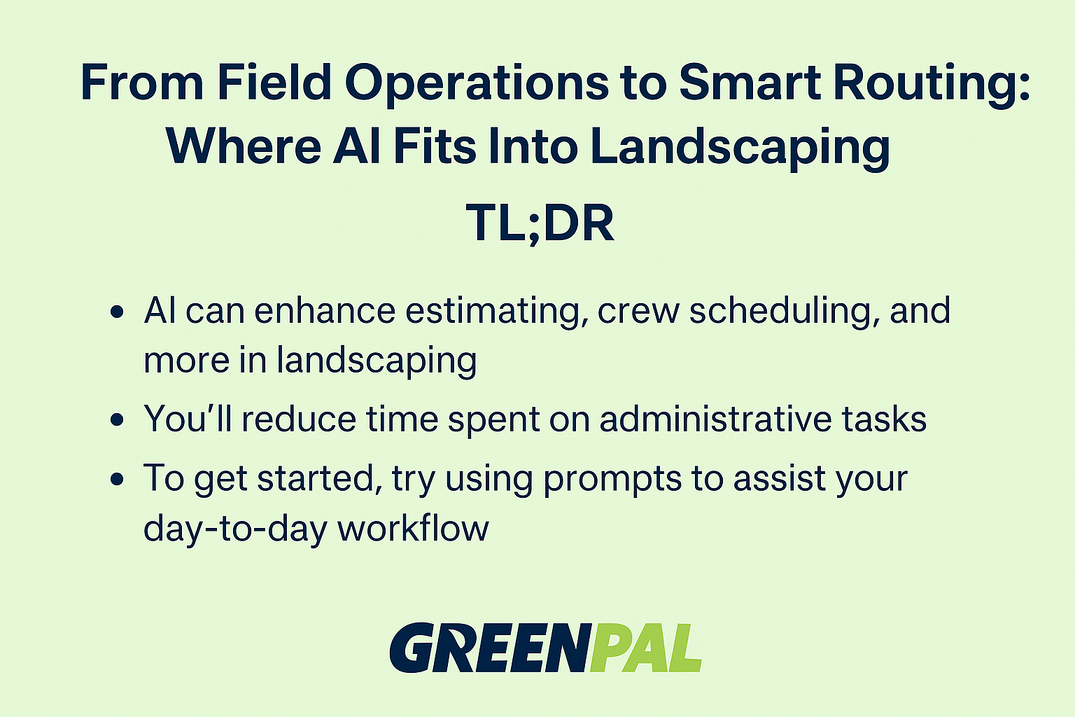
Field Operations: Saving Time Where It Counts
Landscaping crews lose hours every week sitting in traffic, chasing tools, or waiting for directions. AI can help predict travel times, balance workloads, and even adjust routes when weather or traffic changes mid-day.
The report found that 93% of companies already use software, meaning adding AI isn’t a massive leap. It’s just the next step.
How It Helps in Real Life
Predicts how long each job will take based on size and crew history.
Suggests who should take each route to cut idle time.
Reroutes automatically when a delay hits one crew.
| Without AI | With AI Tools |
|---|---|
| Manager builds daily routes manually | AI creates routes in minutes |
| Crews sit idle when jobs run long | Real-time rescheduling keeps work flowing |
| Hard to predict fuel use | System estimates mileage and fuel costs |
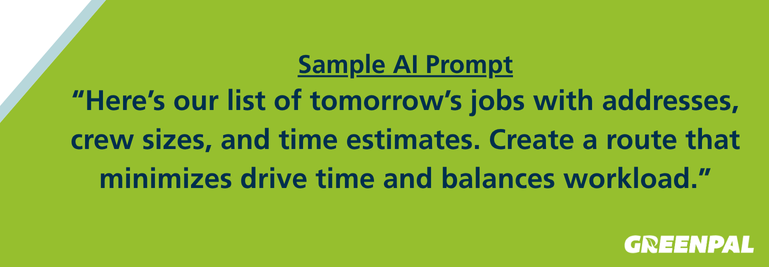
Smart Routing: Turning Miles into Profit
Every mile costs money, fuel, wages, and lost billable hours. The report shows 33% of landscapers expect smart routing to be one of AI’s biggest breakthroughs. Instead of relying on Google Maps and guesswork, AI can combine traffic, job length, and crew skill to build the fastest plan possible.
How It Helps in Real Life
Combines multiple routes into one optimized plan.
Predicts total drive time for the day.
Updates clients automatically if delays occur.
| Non-AI Routing | AI-Powered Routing |
|---|---|
| One route fits all crews | Each crew gets the most efficient loop |
| Manual adjustments after rain delays | AI suggests new order automatically |
| Fuel waste and missed windows | Reduced drive time and happier clients |
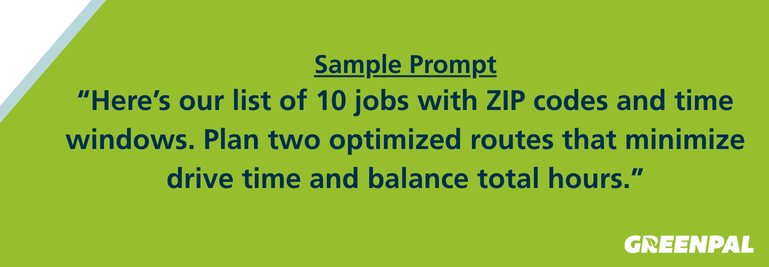
Equipment and Fleet: Predict Before You Break Down
According to the report, 25% of landscapers already use equipment tracking tools, and many are moving toward predictive maintenance. AI can analyze mower hours, truck mileage, and repair logs to flag problems before they shut you down mid-season.
How It Helps in Real Life
Tracks engine hours and flags overdue maintenance.
Finds which units cost more in fuel or downtime.
Keeps service schedules synced with routing software.
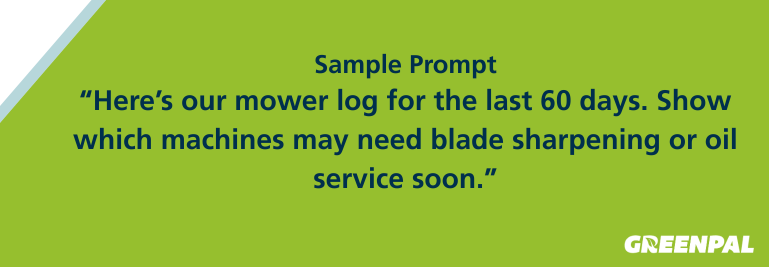
Smarter Estimating: Faster and More Accurate
The report shows 61% of companies use estimating or proposal software, but few combine it with AI. AI can link travel time, labor rates, and material costs to build bids that match your actual expenses—no spreadsheet guesswork.
How It Helps in Real Life
Adds drive time from your routing data automatically.
Suggests pricing tiers based on material quality.
Creates proposal templates that match your tone.
| Old Way | AI-Enhanced Way |
|---|---|
| Manually totals hours and fuel | AI calculates time, cost, and margin instantly |
| Writes proposals from scratch | Generates ready-to-edit templates |
| Misses hidden costs | Warns about underpriced line items |
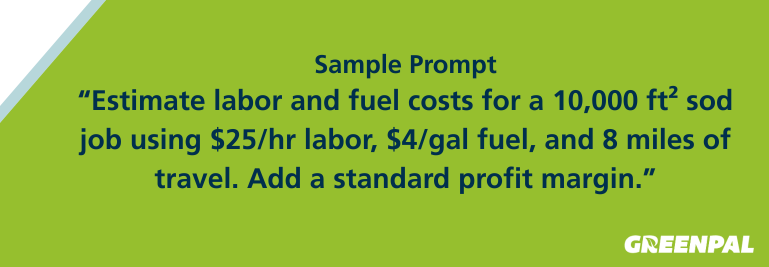
Communication: The Hidden Time Saver
Only 25% of landscapers use customer-notification tools, even though AI can make communication effortless. From appointment reminders to review requests, ChatGPT can craft messages that sound personal without requiring you to spend your evening doing it.
How It Helps in Real Life
Sends schedule reminders automatically.
Personalizes follow-ups after jobs.
Keeps customers updated during weather delays.
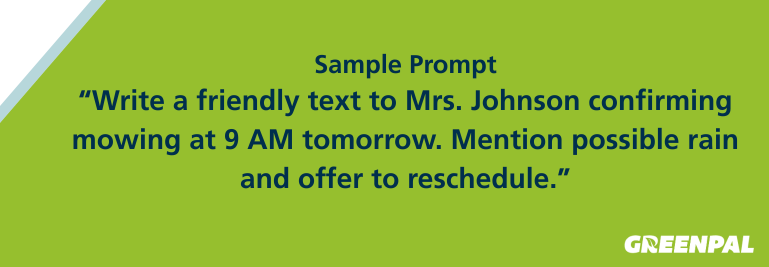
Getting Started: Keep It Simple
Using tools like ChatGPT to handle the small, time-draining tasks that pile up during the week can save both time and money. GPT is affordable and easy to use; the most important thing is to make sure it has accurate data about your business to work with.
✅ Start with one workflow you repeat every day.
Copy and paste a recent customer text, route list, or estimate and ask ChatGPT to make it cleaner, faster, or more professional.
✅ Use your own data.
Feed ChatGPT with real examples—such as your job types, pricing tiers, or crew names—so its suggestions align with how you actually run your business.
✅ Keep prompts short and clear.
Instead of asking it to “help with operations,” be specific: “Write a short update for Crew 2 explaining a 45-minute rain delay.”
✅ Build a few go-to prompts.
Save your best ones in a notes app for quick reuse, one for scheduling, one for estimates, and one for review requests.
✅ Test, tweak, repeat.
If it doesn’t sound right the first time, ask it to “make it shorter,” “sound friendlier,” or “match the tone of this example.” Each edit helps refine your results.
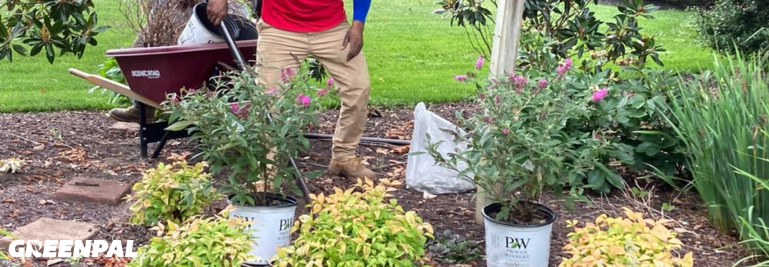
More Advanced AI Use
You can build a custom version of ChatGPT that already knows your pricing, tone, and services. It’s easy, takes about ten minutes, and requires no coding.
✅ 1. Pick one job to focus on
Start small: daily routing notes, estimate drafts, or customer messages.
✅ 2. Upload your examples
Add a few sample estimates, text messages, or your price sheet so it learns your language.
✅ 3. Paste these instructions into your GPT setup
✅ 4. Add a few quick prompts
Save them inside your GPT as conversation starters:
“Optimize today’s 8 jobs across two crews with less drive time.”
“Write a short thank-you text and review request for Mrs. Johnson.”
✅ 5. Test and tweak
Try it for a few days. Adjust tone or add more examples until it sounds exactly like your business. Your custom GPT becomes a digital helper for routing, estimates, and customer updates—saving you hours each week while keeping your voice consistent.
Final Thoughts
AI won’t replace good crews; it will give them back the time they waste on manual work.
Landscaping pros who start small now—using AI for routes, estimates, or updates—will build smoother, more profitable operations in the years ahead.
And with GreenPal already automating scheduling, payments, and customer connections, pairing it with simple AI tools can make your business run almost on autopilot.





















